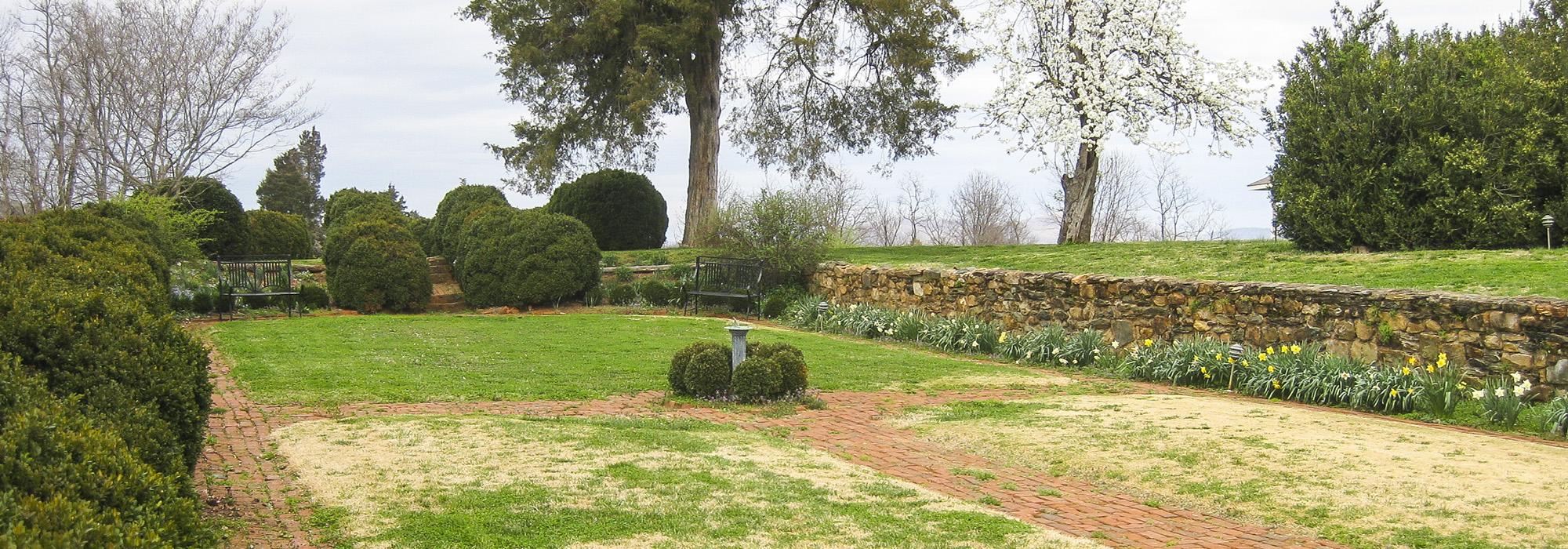Landscape Information
In 1793, James Monroe purchased 1,000 acres on Carter’s Mountain, two miles from Thomas Jefferson’s Monticello. Monroe called the farm The Highlands, and raised grains and milled timber from the adjacent 2,000-acre woodlands he later obtained. The Monroe family dwelled in the property’s small cottage from 1799 to 1823. In 1837 Alexander Garrett purchased the house and 600 acres and renamed it Ash Lawn. The Masseys owned the property from 1867 to 1930, significantly altering the house and installing its formal gardens. Jay Winston Johns then bought the estate, bequeathing it in 1974 to the College of William and Mary, which operates it today.
The Monroe-era house faces north toward pastoral views of the mountainside, while the Massey addition faces east. The north garden is a rectangular, sunken space, lined by boxwoods and a rubble-stone wall fronted by planting beds; a central brick path leads to a sundial. A boxwood allée connects the east façade and a circular clearing, framing a marble statue of Monroe. A cross-axis allée leads to an ancillary structure and another circular boxwood arrangement. A Monroe-era white oak, 20-feet in circumference, presides over the east boxwood garden. South of the house lies the kitchen yard, holding the remaining plantation outbuildings and a vegetable garden surrounded by a white picket fence. A curving line of mature white ash trees trails through the northwestern lawn, while evergreens line the entrance drive. Ash Lawn-Highland was listed in the National Register of Historic Places in 1973.












